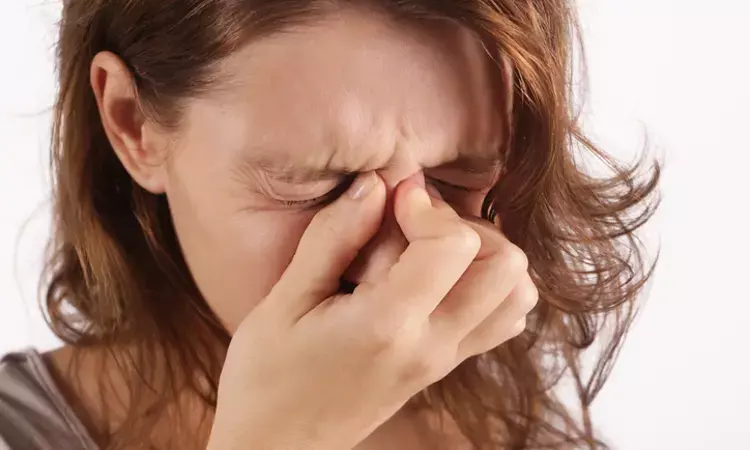- Home
- Medical news & Guidelines
- Anesthesiology
- Cardiology and CTVS
- Critical Care
- Dentistry
- Dermatology
- Diabetes and Endocrinology
- ENT
- Gastroenterology
- Medicine
- Nephrology
- Neurology
- Obstretics-Gynaecology
- Oncology
- Ophthalmology
- Orthopaedics
- Pediatrics-Neonatology
- Psychiatry
- Pulmonology
- Radiology
- Surgery
- Urology
- Laboratory Medicine
- Diet
- Nursing
- Paramedical
- Physiotherapy
- Health news
- Fact Check
- Bone Health Fact Check
- Brain Health Fact Check
- Cancer Related Fact Check
- Child Care Fact Check
- Dental and oral health fact check
- Diabetes and metabolic health fact check
- Diet and Nutrition Fact Check
- Eye and ENT Care Fact Check
- Fitness fact check
- Gut health fact check
- Heart health fact check
- Kidney health fact check
- Medical education fact check
- Men's health fact check
- Respiratory fact check
- Skin and hair care fact check
- Vaccine and Immunization fact check
- Women's health fact check
- AYUSH
- State News
- Andaman and Nicobar Islands
- Andhra Pradesh
- Arunachal Pradesh
- Assam
- Bihar
- Chandigarh
- Chattisgarh
- Dadra and Nagar Haveli
- Daman and Diu
- Delhi
- Goa
- Gujarat
- Haryana
- Himachal Pradesh
- Jammu & Kashmir
- Jharkhand
- Karnataka
- Kerala
- Ladakh
- Lakshadweep
- Madhya Pradesh
- Maharashtra
- Manipur
- Meghalaya
- Mizoram
- Nagaland
- Odisha
- Puducherry
- Punjab
- Rajasthan
- Sikkim
- Tamil Nadu
- Telangana
- Tripura
- Uttar Pradesh
- Uttrakhand
- West Bengal
- Medical Education
- Industry
Higher serum and tissue eosinophil levels linked to Chronic rhinosinusitis with asthma

MALAYSIA: According to a study that was published in the European Archives of Oto-Rhino-Laryngology, Chronic rhinosinusitis (CRS) with asthma has significantly greater levels of serum and tissue eosinophils.
Chronic rhinosinusitis is a heterogeneous condition with a number of etiologies and risk factors. It is among the most widespread chronic inflammatory conditions affecting the Sino nasal mucosa.
The management of CRS is made more difficult by the underdiagnosis of asthma in CRS patients.
In order to further avoid recurrence and improve the efficacy of treatment for CRS, Norasnieda Md Shukri and colleagues observed that using blood and tissue eosinophil as an indicator and predictor of asthma in CRS patients is crucial.
The authors sought to ascertain the correlation and diagnostic use of serum and tissue eosinophils in the diagnosis of asthma in CRS patients.
For this purpose, a cross-sectional study comprising 24 CRS patients from the otorhinolaryngology clinic of two tertiary hospitals on the East Coast of Peninsular Malaysia, with and without asthma, was carried out. There were 48 CRS patients in all, with a mean [SD] age of 47.50 [14.99] years. Both groups' levels of tissue and serum eosinophils (obtained from nasal polyps) were compared. Using logistic regression analysis, the relationship between serum and tissue eosinophils and asthma was assessed while controlling for significant sociodemographic factors. The receiver operating characteristic curve was then analyzed in order to examine the diagnostic value of serum and tissue eosinophil.
Major findings of the study:
- Serum [0.48 vs 0.35 109/L] and tissue [100 vs 8.5 per HPF] eosinophil levels were substantially greater in asthmatic patients.
- After correcting for age and serum eosinophil levels, tissue eosinophils were reported to be a standalone predictor of asthma with an adjusted OR of 1.05, p< 0.001.
- Serum eosinophil had a 69.0% area under the receiver operating characteristic curve.
- The serum eosinophil sensitivity and specificity were 75.0% and 70.8% at the ideal cut-off value (0.375 109/L).
- For tissue eosinophil, the receiver operating characteristic curve's area under the curve was 93.4%.
- The sensitivity and specificity for tissue eosinophils at the ideal cut-off value (58.0 per HPF) was 79.2% and 91.7%, respectively.
The authors concluded that between serum and tissue eosinophils in either group, there was no relationship.
"If the tissue eosinophil level is greater than 58 per HPF and the serum eosinophil level is greater than 0.375 109/L, the CRS patient needs to be evaluated for asthma," the researchers asserted.
REFERENCE
Che Mat, C.M.H., Md Shukri, N., Mohamad, S. et al. Diagnostic value of serum and tissue eosinophil in diagnosis of asthma among patients with chronic rhinosinusitis. Eur Arch Otorhinolaryngol (2022). https://doi.org/10.1007/s00405-022-07746-4
Dr Kamal Kant Kohli-MBBS, DTCD- a chest specialist with more than 30 years of practice and a flair for writing clinical articles, Dr Kamal Kant Kohli joined Medical Dialogues as a Chief Editor of Medical News. Besides writing articles, as an editor, he proofreads and verifies all the medical content published on Medical Dialogues including those coming from journals, studies,medical conferences,guidelines etc. Email: drkohli@medicaldialogues.in. Contact no. 011-43720751


